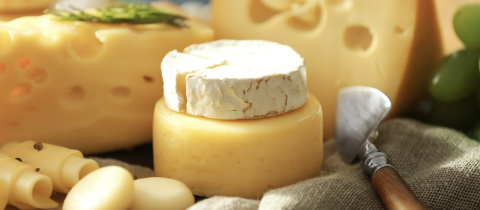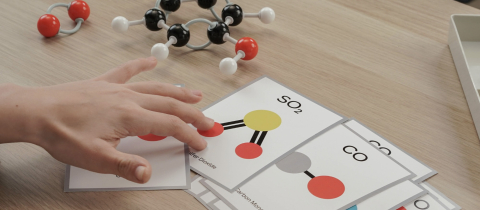No, Paul Newman did not really eat fifty eggs in an hour in the 1967 film classic, Cool Hand Luke. But that would hardly be a challenge for Joey Chestnut, the world’s best-known competitive eater. Joey polished off 141 hard-boiled eggs in just eight minutes and holds the world record for this event. That is about 16 pounds of eggs and around 11,000 calories! His girth was visibly greater after the event but as far as his blood cholesterol goes, one can only guess that it spiked but since competitive eating has no rules about any kind of blood testing, one can only guess.
On the other hand, quite a bit is known about the cholesterol level of the 88-year old gentleman who for at least fifteen years ate twenty-five hard-boiled eggs every day! This case was so unusual that it was written up in the New England Journal of Medicine back in 1991. Of course, consuming that many eggs regularly was strange enough, but what was truly amazing was that his blood cholesterol level was normal and he had no signs of atherosclerosis. Studies showed that somehow his body compensated for the huge influx of cholesterol by reducing its absorption and increasing its conversion to bile acids that were excreted. The psychological reasons for the zealous egg consumption were not determined. While nobody should try to match the twenty-five eggs a day regimen, the current evidence indicates that an egg a day has no significant effect on blood cholesterol which is much more a function of the amount of saturated fat in the diet.
Egg consumption generally goes up at this time of year because of the role eggs play both in the celebration of Passover and Easter. They symbolize fertility, renewal and the circle of life. They are mostly eaten as hard-boiled, so the question of making a perfect boiled egg comes up. With some chemical knowledge, we can make an egg that doesn’t crack during cooking, that peels easily, doesn’t have a flat bottom and isn’t tainted with that revolting dark green colour around the yolk.
First of all, we need to understand why an egg hardens when cooked. This is simply a matter of protein chemistry. A raw egg is mostly water in which protein molecules, along with some fat and cholesterol are suspended. The proteins, long chains of amino acids, are coiled up like little balls of string with minimal interaction with each other. Heat causes these molecules to uncoil, exposing sites on their surfaces where links to other protein molecules can be forged. It is as if the strings straightened out and then intertwined with each other. This microscopic clustering is manifested as macroscopic hardness. The molecular clusters also reflect more light, so the cooked egg loses its transparency. If heating goes on too long, water molecules which have become trapped in the protein lattice are squeezed out leading to an even tighter protein structure and a rubbery texture. We do not want to overcook an egg.
What about the dreaded flat bottom? This can arise because a raw egg does not completely fill its shell. There is a little air pocket inside which actually furnishes a chick with its first breath of air. If this air is not allowed to escape before the white hardens, the egg will develop a flat bottom. Older eggs are more prone to this because they have lost some moisture and therefore have a bigger airspace. As the air is heated, it expands and begins to escape through the porous shell. This is often evidenced by a tell-tale column of bubbles rising from an egg immersed in hot water.
If the air expands too fast, however, it can crack the shell and torment the cook with white streamers. These form as the liquidy egg white, the albumen, spills out and coagulates in the hot water. Adding a little salt or lemon juice can circumvent this problem, because, like heat, these reagents cause the proteins to unfold, join together and harden. This happens immediately as the white begins to ooze out, and as a result, the crack is sealed. But it is better to prevent the calamity rather than try to fix the problem after it happens. Just take a nail or thumbtack and make a little hole in the egg prior to cooking. The escaping air will prevent pressure build-up and will also allow the egg white to flow into the space previously occupied by the air. No flat bottom now!
Unfortunately, there’s more than one way to crack an egg. If a cold egg is placed into hot water, the shell begins to expand. But since the shell is not of the same thickness everywhere, some areas expand more than others and the resulting stress leads to a fracture. The answer is to place the egg in cold water to start with. Then bring to a boil and turn the heat down to a slow simmer for ten minutes. After this, immerse in cold water and peel. If this sounds like too much trouble you can seek out a farmer who treats his hens to carbonated water. This increases the carbonate concentration in their blood, resulting in stronger eggs. I’m told this is done in hot climates where chickens pant a lot and exhale a great deal of carbon dioxide. Apparently, they prefer Perrier.
An eggshell can undergo stress fracture upon cooling as well; some parts of the shell will contract faster than others. The young man who heated seven eggs in their shell for five minutes in the microwave found out about this the hard way. Somehow the eggs survived the pressure build-up in the oven, but when he sat down to enjoy the fruits of his labour, six of the eggs exploded. He was severely burned about the face. Not a good way to make hard-boiled eggs.
How easily an egg peels depends on its age. Fresh eggs tend to have a higher carbon dioxide content and some of this gas dissolves in the egg’s moisture to form carbonic acid. As an egg ages, the carbon dioxide diffuses out and the contents become more alkaline. This weakens the inner membrane that surrounds the egg and prevents it from sticking to the hardened white. Researchers have proven this by showing that fresh eggs exposed to alkaline ammonia vapour can be peeled readily. And how do you know if there is going to be a peeling problem? Just place the egg into a pot of cold water. A fresh egg has a small air pocket and sinks. An older egg will float.
Even a perfectly shaped and peeled hard-boiled egg can have an inner secret. The greenish yolk. Not to worry. This is just a small amount of benign iron sulphide. Egg yolks contain iron, which readily reacts with hydrogen sulphide gas that forms as some of the proteins in the white of the egg decompose as they are heated. The older the egg, the more likely the formation of hydrogen sulphide. As the gas forms, its pressure increases due to the high temperature and it migrates towards the cooler regions, namely towards the yolk. So the remedy for the discoloration is to immerse the cooked egg quickly in cold water and provide an alternate region of low pressure to attract the hydrogen sulphide.
So let’s put it all together. Start with an egg that’s been refrigerated for at least a week, make a hole in the bigger end with a thumbtack, immerse in salted cold water, bring to a boil, reduce to a simmer for ten minutes, plunge into cold water and peel. Don’t use a microwave. You may end up with egg on your face.







